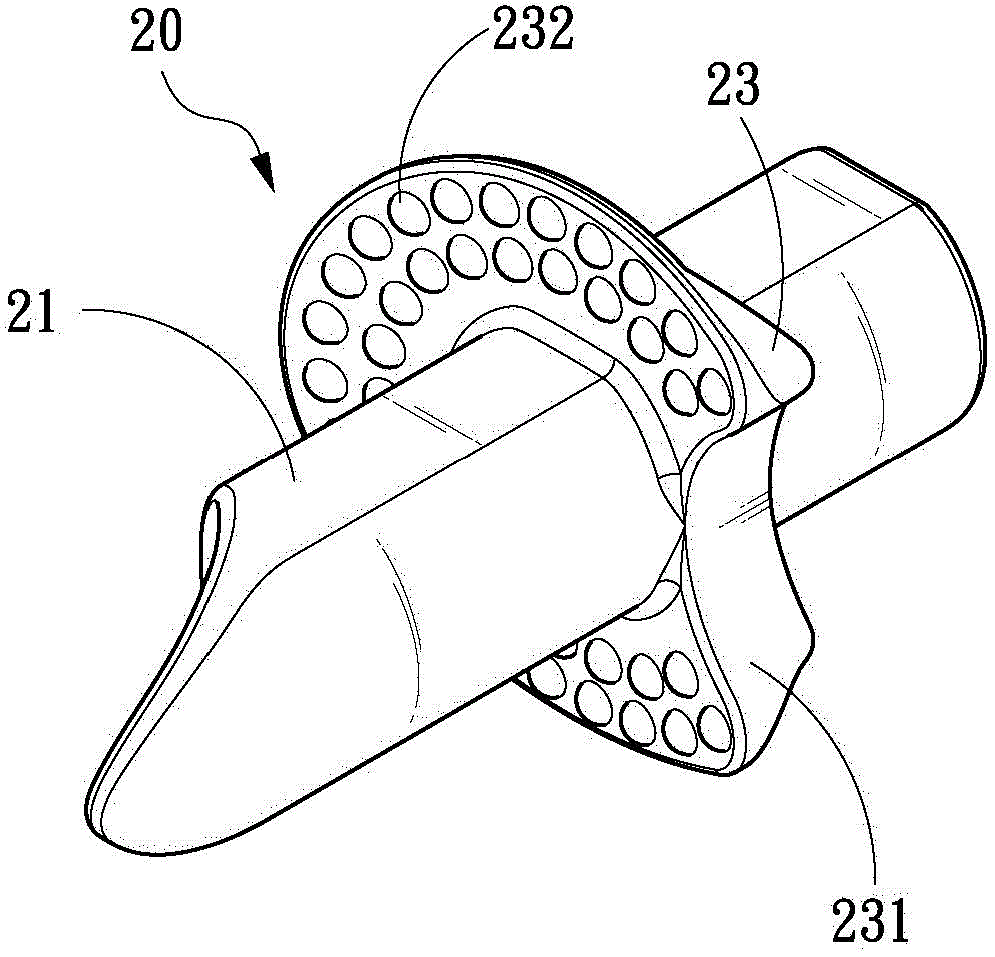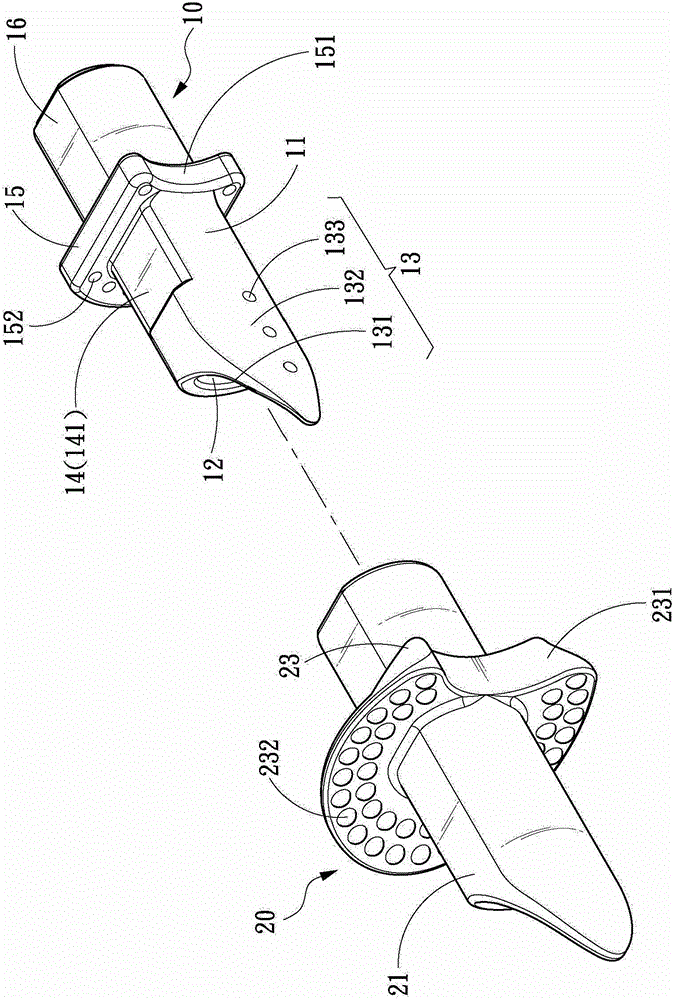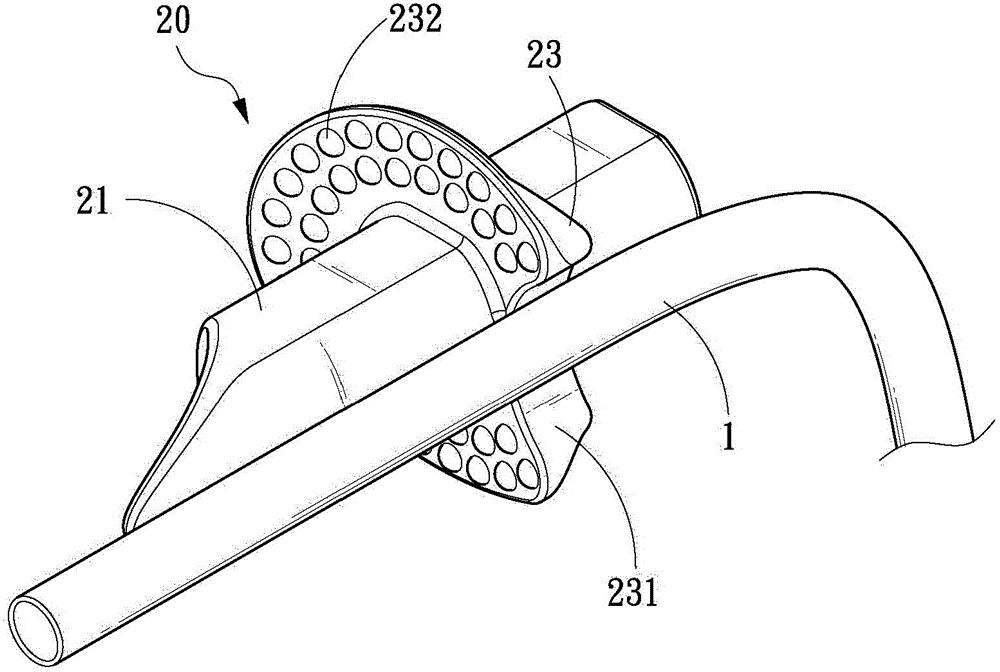Mouth guard
A mouthpiece and oral cavity technology, applied in the field of mouthpieces, can solve problems such as infection, tongue and oral mucosa scratches, bite force separation and detachment of the mouthpiece
- Summary
- Abstract
- Description
- Claims
- Application Information
AI Technical Summary
Problems solved by technology
Method used
Image
Examples
Embodiment Construction
[0018] The detailed description and technical content of the present invention are described as follows with illustrations:
[0019] See figure 1 , figure 2 , image 3 , Figure 4A and Figure 4B As shown, the present invention is a mouthpiece, which is fixedly placed in a human oral cavity (not shown) in conjunction with a tracheal intubation tube 1. The mouthpiece includes a rigid tube 10 and a covering on the rigid tube 10 of the surface of the elastic covering 20. The rigid tube 10 includes a tube body 11, a channel 12 arranged in the tube body 11, a tongue depressor 13 arranged on one side of the tube body 11, and an occlusal joint adjacent to the tongue depressor 13 The portion 14, a stopper 15 connected to the side of the bite portion 14 away from the tongue depressing portion 13, and an extension portion 16 connected to the side of the stopper 15 away from the bite portion 14. The channel 12 can be used for nursing staff or physicians to perform sputum or corresponding ...
PUM
 Login to View More
Login to View More Abstract
Description
Claims
Application Information
 Login to View More
Login to View More - R&D
- Intellectual Property
- Life Sciences
- Materials
- Tech Scout
- Unparalleled Data Quality
- Higher Quality Content
- 60% Fewer Hallucinations
Browse by: Latest US Patents, China's latest patents, Technical Efficacy Thesaurus, Application Domain, Technology Topic, Popular Technical Reports.
© 2025 PatSnap. All rights reserved.Legal|Privacy policy|Modern Slavery Act Transparency Statement|Sitemap|About US| Contact US: help@patsnap.com



